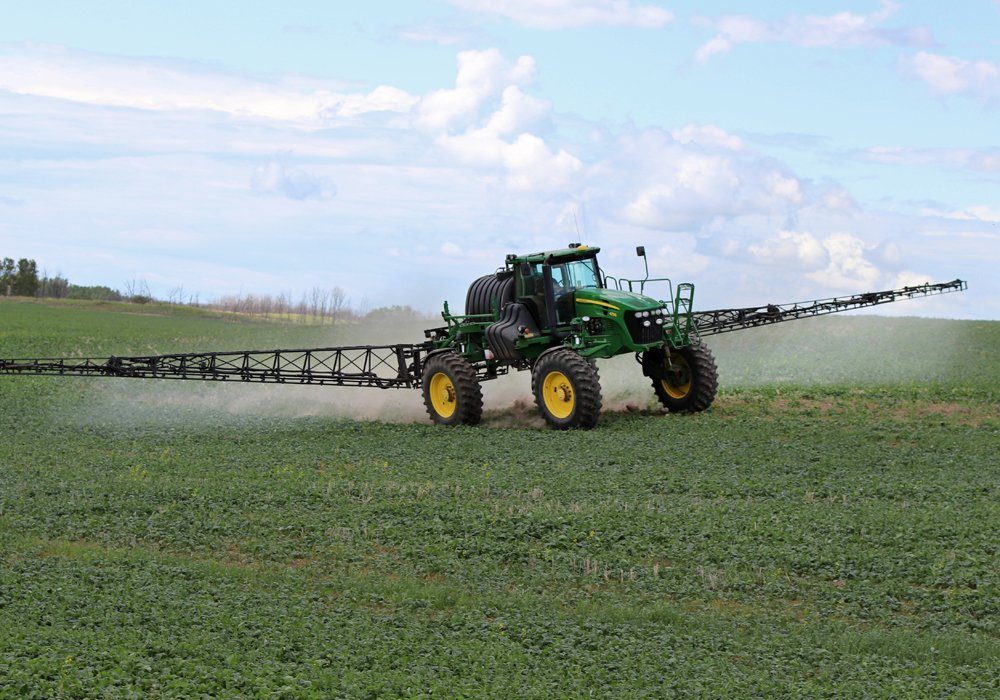Glyphosate price hike may be coming

Glyphosate prices may soon be on the rise in Canada due to a doubling of the active ingredient price in China, says an industry executive.
“There is no doubt there is going to be an impact at some point in Canada,” said Marc-Andre Fortin, director of North American crop protection with Farmers Business Network.
The ripple effect is already being felt in the United States where glyphosate was selling for US$11 to $12 per gallon back in November/December 2020.
“You cannot, right now, buy glyphosate cheaper than $20 per gallon,” he said. “And paying is not the issue, finding it is the issue.”
Prices in the U.S. are more responsive than Canada because the U.S has a robust reseller and broker business and it sells more generic glyphosate.
Canada’s system of wholesalers and retailers is slower to respond to changes in the cost of production and supply shortages.
“Nothing happens fast in that supply chain,” said Fortin.
But he thinks there will be a price response when the supply chain reloads for the fall and for pre-sale for next year.
“We don’t live on an island and those global impacts will materialize in Canada at some point,” said Fortin.
He wouldn’t speculate on exactly when the increase will hit or how much prices will rise.
“It will be interesting to see how that shakes out,” he said.
AgriBusiness Global, a publication that reports on crop inputs, ran a story recently forecasting that the price of glyphosate 95-percent, which is the active ingredient for making glyphosate, will average US$6.20 to $6.90 per kilogram in China in May.
That is more than double last year’s prices and the highest level in three years.
China accounted for more than 60 percent of the world’s glyphosate supply in 2017, according to a report by Research and Markets, so that sharp price increase in China is bound to have ripple effects around the globe.
David Li, author of the AgriBusiness Global story and business manager with Beijing-based SPM Biosciences Inc., said the run-up in prices was triggered by the flood in Sichuan province in the summer of 2020 that suspended production at the Fuhua Tongda Agrochemical Technology facility.
That resulted in “a significant gap in supply” that has continued into 2021, according to Li.
An outbreak of COVID-19 in Hebei province in early 2021 further disrupted supplies because it is the centre for glycine manufacturing in China, which is one of the intermediary products in the manufacturing of glyphosate.
The rising price of other key raw materials for the production of glyphosate, such as yellow phosphorus, also squeezed profit margins, said Li.
Fortin said Canada doesn’t manufacture any glyphosate. Manufacturers import formulated product and distribute it to farmers through the wholesale and retail network.
The problem is the price of surfactants and inerts have also gone up in China for many of the same reasons affecting the doubling of active ingredient prices.
In addition, ocean freight rates have doubled from year-ago levels.
“It’s a series of unfortunate events,” said Fortin.
It all adds up to bad news for farmers in Western Canada who are heavy users of the crop input.
Herbicides are the biggest variable expense for Saskatchewan’s spring wheat growers and the second biggest expense next to seed for the province’s canola growers, according to the 2021 Crop Planning Guide.
Li is uncertain how high the price of the active ingredient will rise in China but it is possible that prices could return to the lofty levels of 2008, when they were more than $11 per kilogram.
Fortin isn’t sure they will climb that high but every month of restricted supplies is another month of playing catch-up.
Even if prices fall back down to the $3 level in China by early next year, it will take a long time for the supply chain to work through the higher-priced product that is already in the system, he said.
Source: www.producer.com

